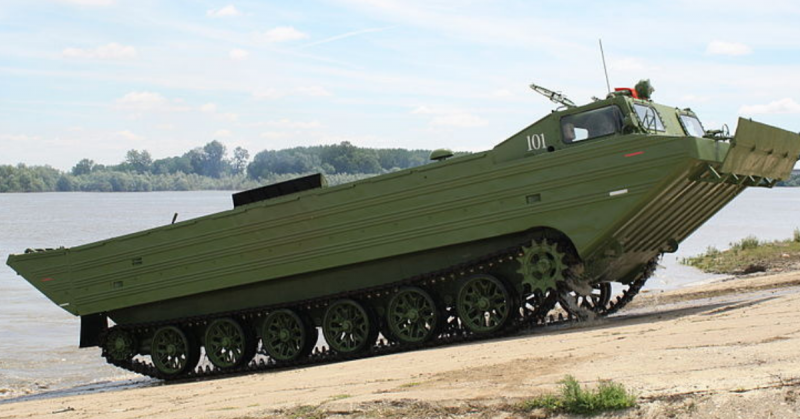The Soviets tried many times through history to create an amphibious vehicle. Some of those attempts were more successful than others.
The GAZ-46 MAV was an early attempt to develop such a vehicle. During World War II, Ford manufactured an amphibious vehicle known as the GPA. It was slow on dry land and ineffective in the water, so U.S. troops were reluctant to use them. Most of the GPAs were sent to Russia as part of the Lend-Lease program. The Soviets then received a license from Ford to manufacture the GPA themselves.
When the war ended, the Soviet Union developed the GAZ-46 based on the design of the Ford GPA. It was slightly bigger to make it more buoyant in the water, but had the same basic layout and design of the original Ford model. Many Eastern Bloc countries used the vehicle for crossing lakes and rivers and for doing reconnaissance in rivers.
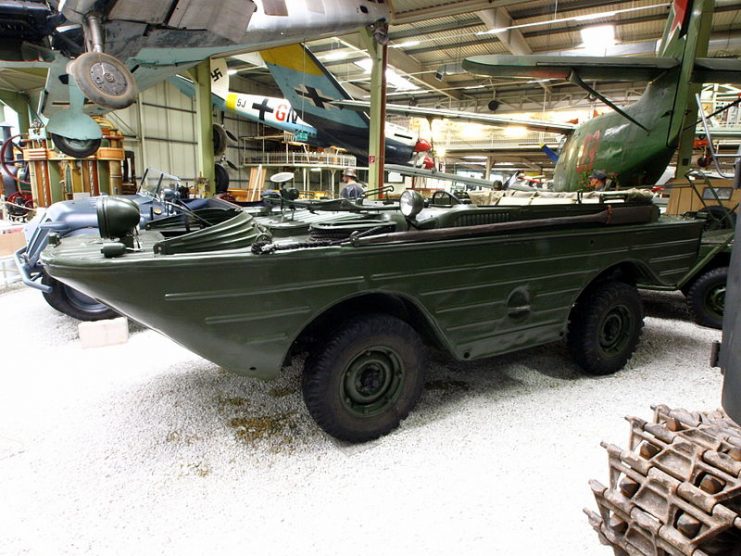
“MAV” is a Russian acronym which translates to “small floating vehicle.” It was decided that a larger amphibious vehicle was needed to overcome the MAV’s limitations of 5 people and a relatively small amount of cargo. So the “BAV,” or “big floating vehicle,” was developed.
The ZiS-485 was similar to the DUKW that was used by the other Allied forces in WWII and which had been supplied to the Soviet Union during that time. It held up to 28 people or 2.5 tons of cargo. The Soviets stopped manufacturing the ZiS-485 in the 1960s, but it saw continued use throughout the Eastern Bloc and the Middle East until the 1980s.
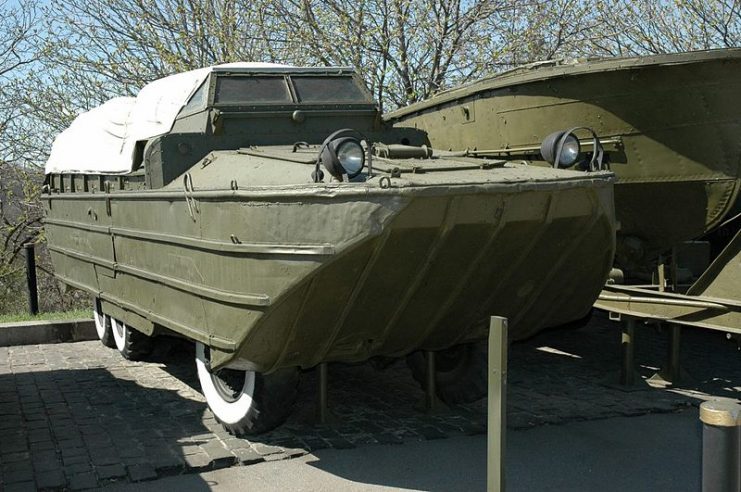
In the 1960s, the Soviets developed an original amphibious vehicle which replaced the BAV. Known as the PTS, it was a medium-sized transport vehicle that became the model for future amphibious vehicle designs – some of which are still in use by the Russian army today.
Introduced in 1965, the PTS held twice as much cargo as the BAV. It used tracks, unlike the BAV which had six wheels. The PTS also had the ability to perform in areas contaminated by radiation or chemical weapons.
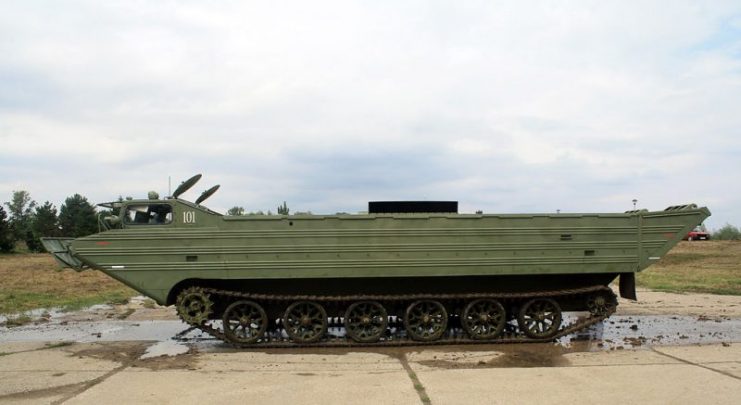
The Niva is a popular Soviet-era crossover vehicle which was able to be driven off-road or in cities. The Ministry of Defense ordered an amphibious version for military use. The VAZ-E was designed in 1976 to meet that request, but the engine cooling system took another ten years to perfect. 21 VAZ-Es were produced before the Perestroika movement led to the end of its development.
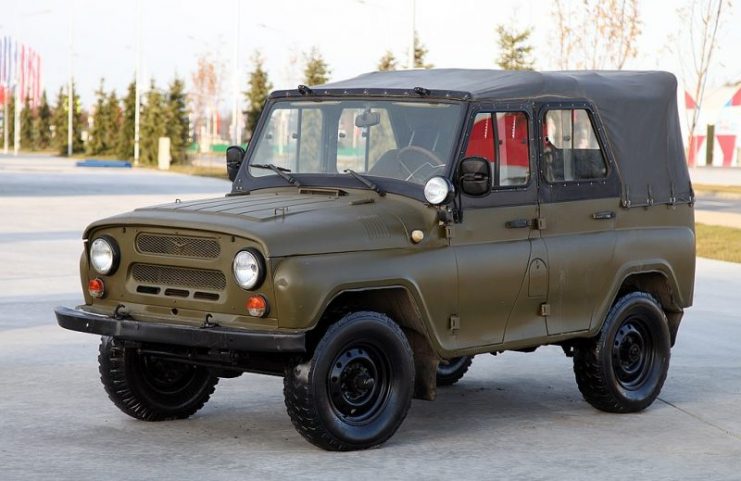
The Soviets also developed an amphibious vehicle for airborne troops to evacuate their wounded and deliver ammunition. Designated the LuAZ-967, it was possible to drive the vehicle while in a semi-prone position. It was light enough to be transported by plane, but could only carry 880 pounds of cargo. This vehicle was produced in the Soviet Union throughout the 1960s and 1970s.
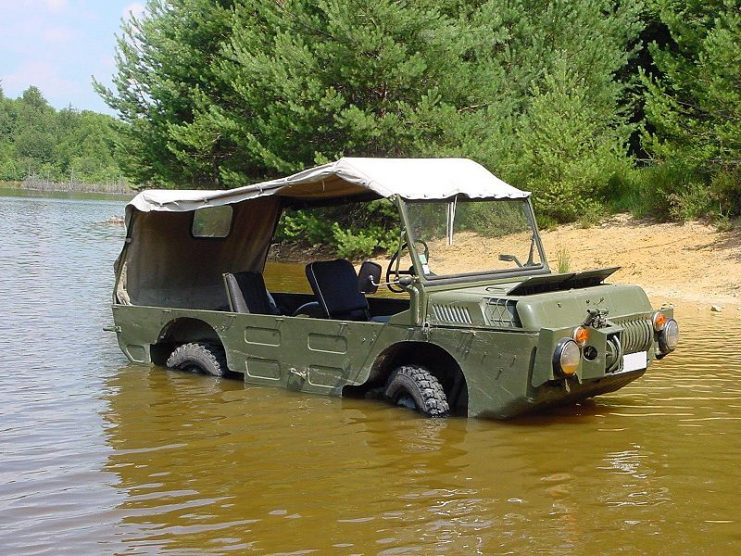
In the 1970s UAZ, the Soviet automobile factory in Ulyanovsk, began developing an amphibious vehicle for the army and for the border patrol. In the early 1980s, it completed the development of the UAZ 3907 Jaguar.
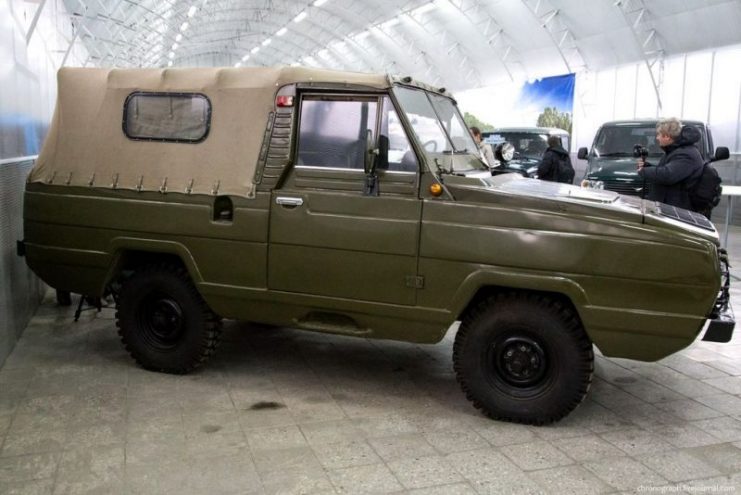
Read another story from us: Anti-Tank Missile Vehicles – 22 Facts About the Soviet 2P Series
By 1989, UAZ had manufactured 14 Jaguars. They were able to carry 1,763 pounds, move at 62 mph, maneuver in water, and even sustain the shockwave of a nuclear blast. The design was approved by the military, but the fall of the Soviet Union ended the Jaguar’s production.
